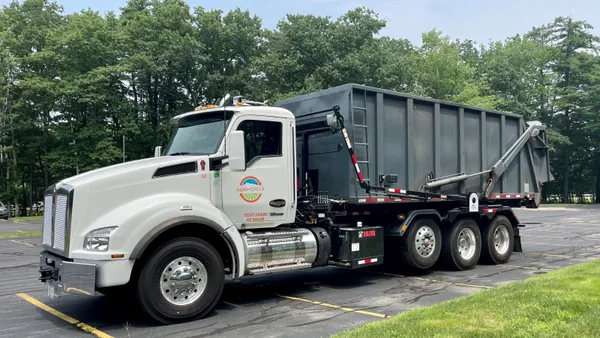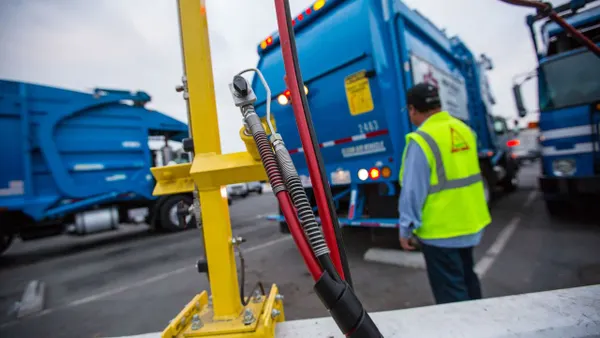Dive Brief:
- On Monday, officials in Prince George’s County, Maryland announced the expansion of its Western Branch Organics Composting Facility in Upper Marlboro. When completed later this summer, the facility will be the largest food waste composting facility on the East Coast, designed to help Maryland meet its annual 40% waste reduction goal. Maryland Environmental Services (MES) operates the facility through an intergovernmental agreement with Prince George’s County.
- The facility currently produces some 12,000 tons of food waste compost per year, but with the expansion, production will quadruple to approximately 57,000 tons per year. Food waste is converted into a trademarked compost product called Leafgro GOLD that is sold to residential and commercial buyers. Revenue from the sales is directed back to the county to help offset the cost of the composting operation.
- "Food waste composting is an ancient practice whose time has come again," Adam Ortiz, director of the Prince George’s Department of the Environment, told Waste Dive. "We’re thrilled to be in the vanguard of the movement that’s creating an organic and healthy soil amendment. Even with this expansion, we’ll be struggling to meet the demand for our facility and our product. We’re making money out of waste. It’s hard to beat that!”
Dive Insight:
For more than 23 years, Prince George’s (PG) County has owned and managed the Western Branch Composting Facility. While the facility initially only accepted yard waste, it began accepting food waste in 2013. Today, it is the only facility in Maryland that accepts residential, commercial and institutional food waste, as well as yard waste such as grass clippings, leaves, brush, small branches and Christmas trees.
The Natural Resources Defense Council estimates that each American throws out more than 400 pounds of food annually. While efforts are underway across the country to "rescue" food through groups such as the Food Recovery Network, Food Rescue US and any number of local initiatives, food waste still represents a large portion of the U.S. waste stream.
While not all cities separate food waste as a category in their waste characterization studies, some do. A 2011 Solid Waste Characterization Study for the District of Columbia found that food waste makes up approximately 15% of the District’s overall residential waste stream while a 2017 New York City study found that food made up 21% of residential waste.
Tipping fees at the PG County composting facility are approximately 40% lower than those at area landfills. Residential curbside food waste is collected by county-contracted haulers while entities such as the University of Maryland and other businesses that are looking to divert food waste away from landfills hire commercial haulers to take their food waste to the facility. The lower tipping fees for composting make good business sense for these organizations.
Demand is driving PG County’s food waste compost expansion. The system will use the GORE Cover System and will feature increased airflow and leachate capture and in-system reuse that results in higher temperatures that will vastly accelerate compost production from 6-9 months to 8 weeks. In addition to reducing compost production time, these covered systems are less impacted by weather conditions while reducing odors and vermin — including rats and birds — that are generally associated with food waste systems.
While many municipalities struggle with finding sufficient space for such an operation, this isn’t an issue in PG County. The Western Branch facility covers over 200 acres, and even with the expansion, they’re only using a small portion of that space. With a booming and food-waste-creating Washington, DC metro area nearby, supply and demand for compost is high.









